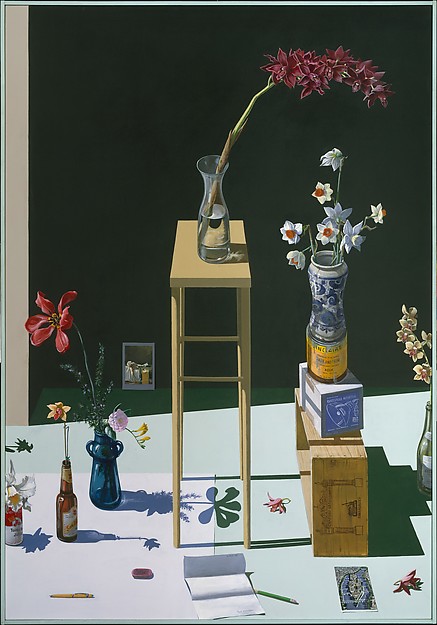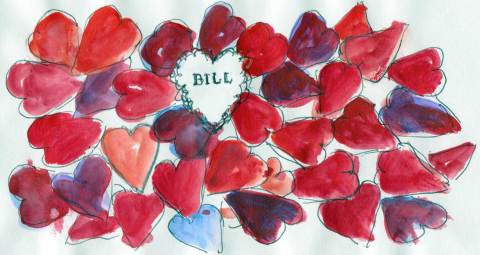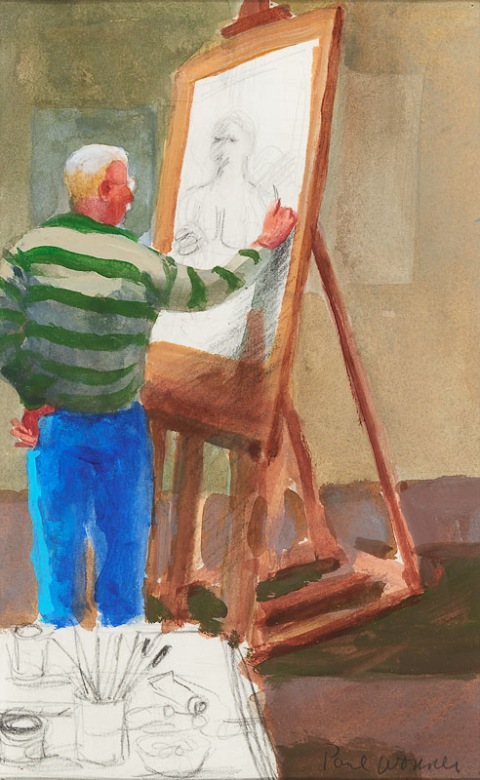The Birth of Bay Area Figuration
June 23, 2023 § 1 Comment
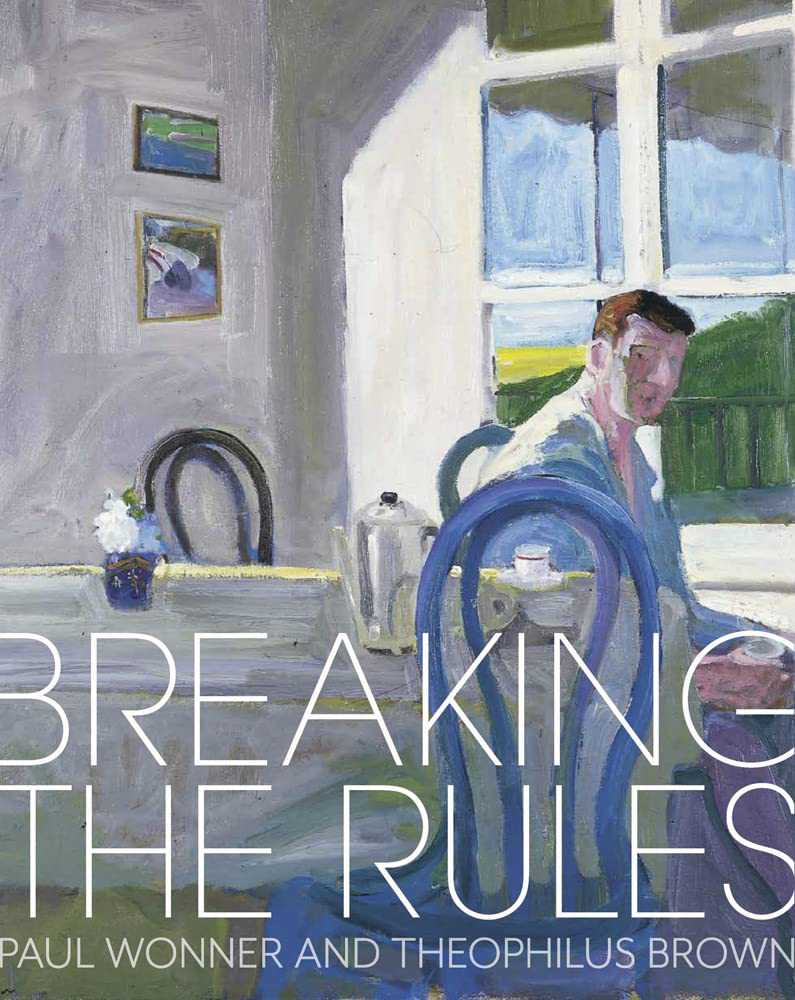
IN 1952, while studying for their master’s degrees in art, Paul Wonner and Theophilus Brown met at the University of California, Berkeley.
After graduating, they found studio space on Berkeley’s Shattuck Avenue, a building they shared with Richard Diebenkorn, David Park and Elmer Bischoff, among others, who met there for drawing sessions. From this creative association came the movement that became known as Bay Area Figuration (or the Bay Area Figurative Movement) in which recognizable subject matter and the gestural bravura of Abstract Expressionism co-existed.
It was the first contemporary artistic movement that achieved recognition in the United States and abroad that originated in California.
REVIEW: “Making the rules“

‘This may be my best painting’
June 6, 2023 § Leave a comment
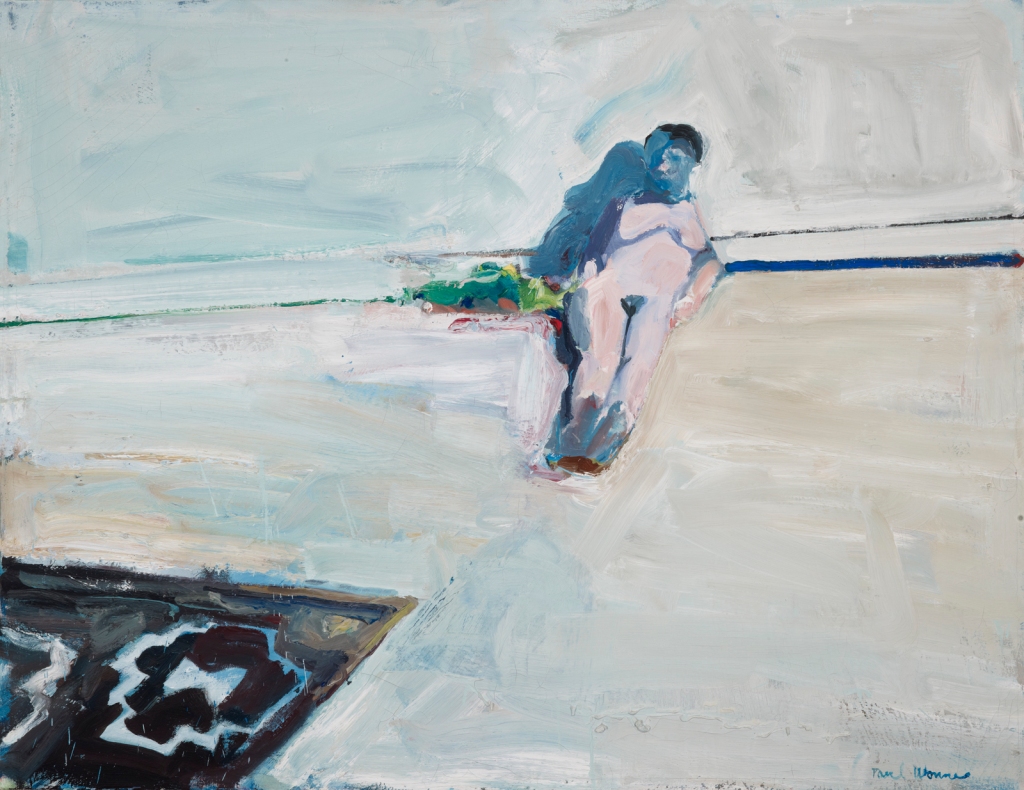
By MATT GONZALEZ
I first met Paul Wonner and Bill Brown in the early 2000s at the San Francisco home of the gallerist Charles Campbell and his artist wife, Glenna.
I particularly enjoyed watching Bill and Paul look at their own paintings, which hung in the Campbells’ Potrero Hill home. Charlie and Glenna had a wonderful collection, which included their Bay Area Figurative associates, including Richard Diebenkorn, David Park, Joan Brown, Manuel Neri, Elmer Bischoff, Wayne Thiebaud and Nathan Oliveira. There was something about the way that Bill and Paul studied their own paintings that seemed as if they were discovering them for the first time.
Once when I was with Paul and Charlie in the living room, among a Neri plaster and paintings by Frank Auerbach and Thiebaud, Paul was staring intently at one of his own paintings, his 1961 Nude with Indian Rug. I was anticipating his disapproval when he said, “This may be my best painting.” Charlie was so excited that he went over to the kitchen, asked Glenna and Bill to join us, and made Paul repeat the remark. Whether the wine had already gotten to him, I do not know, as Paul made too many fine paintings in my estimation to call any one of them his best. However, there was in his comment an excitement about engaging with a work from another era. We all enjoyed a hearty toast to the sentiment.
— excerpted from Breaking the Rules: Paul Wonner and Theophilius Brown, a catalog for the exhibition of the same title at the Crocker Art Museum in Sacramento, which continues through August 27.
Wonner-Brown estate to the Crocker
March 30, 2019 § Leave a comment

William Theophilus Brown | Standing Bathers (1993)
THE CROCKER ART MUSEUM in Sacramento has received more than 1,800 works of art by Paul Wonner and William Theophilus “Bill” Brown and established the Paul Wonner and William Theophilus Brown Endowment Fund.
In accordance with the artists’ wishes, the fund will support museum projects relating to emerging artists or lesbian, gay, bisexual, transgender, queer, or questioning and intersex artists.
By 2023, the Crocker Art Museum will use the fund to mount an exhibition of the work of Wonner and Brown — the most comprehensive show of the artists’ body of work ever presented — and produce an accompanying catalogue.
“Paul Wonner and Bill Brown were trail blazers, both individually and as a couple,” said the museum’s associate director and chief curator, Scott A. Shields. “It is wonderful that their legacy will live on, not only through their own art, but though their forward-looking support of other artists. It is what they wanted, and everyone at the Crocker is honored to be able to realize their vision.”
Read more from the Crocker Museum
Paul Wonner and the ‘Femme au Coq’
November 6, 2016 § Leave a comment

Paul Wonner | Still Life with “Femme au Coq”
By MATT GONZALEZ
For several years in the early 1950s, Paul Wonner returned to a subject matter in his art making practice: the painting of a still life with femme au coq, translated from the French as woman with rooster. Anyone familiar with modern European painting would recognize the motif as it was explored by many artists, including Pablo Picasso and Marc Chagall. The trope presents the rooster as a symbol of sexuality, virility and fertility. Paired with the woman, it exalts romantic love and the heterosexual coupling traditionally associated with marriage.
It is curious that Wonner would find the subject matter interesting enough to return to it over the years — at least four known times in a four- to five-year period — while he was a student at U.C. Berkeley. Of course, painters often return to the same landscape, or paint a subject’s portrait repeatedly, but the painting of a subject that is so allegorical and laden with symbolism is not as common. It suggests Wonner was intrigued by or wrestling with its meaning in connection with his own life and art.
Paul Wonner in the Met
October 8, 2012 § Leave a comment
‘That’s how we met’
May 16, 2012 § Leave a comment
William Theophilus Brown — Bill to his friends — and Paul Wonner met as graduate art students at Berkeley in 1952. Their partnership endured. “He was my best critic,” said Brown, “and I think I was his.”
In a conversation with Paul Karlstrom of the Smithsonian Institution in 2011, Brown recalled when they met.
WTB: I came out to California because I wanted to try to find out a little more about who I was. And I knew nobody in California. I knew the Stravinskys, but they were in Los Angeles. And so I decided to go to graduate school at Berkeley and get a degree so I would be able to teach. And I did. And I came out in the fall three days before classes began and signed up. And Paul Wonner was in three out of four classes the first semester.
That’s how you two met?
That’s how we met. Well, we met, but he thought I was such a snob that he didn’t really speak to me very much.
He got over it. How?
He got over it. I didn’t change. Anyway, it took a while, but then I could see from my point of view that Paul was the best painter among the students and also the faculty. So we did get together then.
How old was he relative to you?
I think he was about two or three years younger.
Because you were together a very long time. When did you become a couple?
I think by the end of that first year. We were together 50 years. He was my best critic and I think I was his best critic. We really trusted each other. And, well, I thought he was a marvelous man. Still do.
Paul Wonner: Western Unorthodox
October 9, 2007 § 2 Comments
By JONATHON KEATS
Art & Antiques
In the corner of Paul Wonner’s San Francisco studio rests a small cot, ready to accommodate a mid-afternoon nap. At 87, Wonner tires easily and no longer has the strength to paint large canvases. Yet the artist, whose voice resonates with calm certainty, sees his age as an advantage. “One of the good things about being this old is that you can do whatever the hell you want,” he says, tracing the lines etched in his face with knobby fingers.
